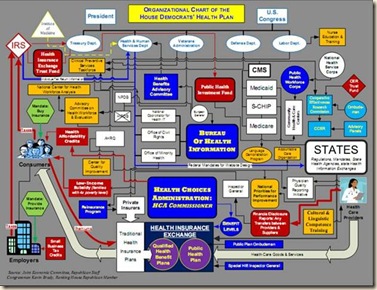Health reform created a weird calculus of outcomes, decision makers and political intrigue
by Catherine Rampell
Update | 2:11 p.m. List of states has been corrected.
My colleagues David Herszenhorn and Robert Pear had an article on Tuesday on the Baucus Six — the group of six senators tasked by their parties to hammer out a new health care package to be considered by the Senate Finance Committee (and then, presumably, the full Senate).
The senators are from Maine, Iowa, Montana, North Dakota, New Mexico and Wyoming. A colleague noted that it’s a somewhat odd group to be asked to design a new health care system, given their constituents.
Whom, exactly, do these senators represent?
They come from some of the country’s least populous states, with no true urban centers to speak of. None of their home states contains even one of the 20 biggest cities in the country. Forget that: Of the country’s 100 biggest cities, just one is in these states (#34, Albuquerque, N.M.).
These states represent less than 3 percent of the country’s population, and hold only 2 percent of the nation’s uninsured, according to Census Bureau estimates.
It makes sense to give the residents of Montana and Wyoming a strong say in the future of health care reform, which will likely affect residents of every state. But shouldn’t someone representing a state with a few big complicated cities also have an official seat at that table, which is trying to determine a compromise that works for (almost) everyone? The way health care functions varies greatly from region to region, in terms of things like patient needs, delivery systems and resources. A more metropolitan state with a few rich, research-oriented medical facilities will operate differently, with regard to everything from expenses to treatment options to patients, from a rural state with fewer resources.
There would be a similarly problematic imbalance if the senators asked to design a template for the future of American health care were all from California, New York, New Jersey and Florida, and excluded all the Iowans and North Dakotans from the table. The plan that resulted from some Bizarro-World, urban-state-only cabal would have altogether different blind spots, of course.
This problem transcends the issue of health care reform; there are surely many occasions when the actual representativeness of our “representative democracy” seems in doubt.
But in this case — where the richer, more populous states will likely disproportionately contribute the federal taxes used for any additional government involvement in health care — it seems especially curious, not to mention impolitic, to exclude a California or a New York from the current discussions.
The Baucus Conference Room:
Last week, there were chippers — chocolate-covered potato chips — described on a sign as “North Dakota Diet Food.” More often, there are Doritos, pretzels, Oreo cookies and beef jerky: fuel to get through hours of talks on topics like the actuarial values of private insurance plans or the cost-sharing provisions of Medicare.
The fate of the health care overhaul largely rests on the shoulders of six senators who since June 17 have gathered — often twice a day, and for many hours at a stretch — in a conference room with burnt sienna walls, in the office of the Senate Finance Committee chairman, Max Baucus, Democrat of Montana.
President Obama and Congressional leaders agree that if a bipartisan deal can be forged on health care, it will emerge from this conference room, with a huge map of Montana on one wall and photos of Mike Mansfield, the Montanan who was the longest-serving Senate majority leader, on the other.
The battle over health care is all but paralyzed as everyone awaits the outcome of their talks.










